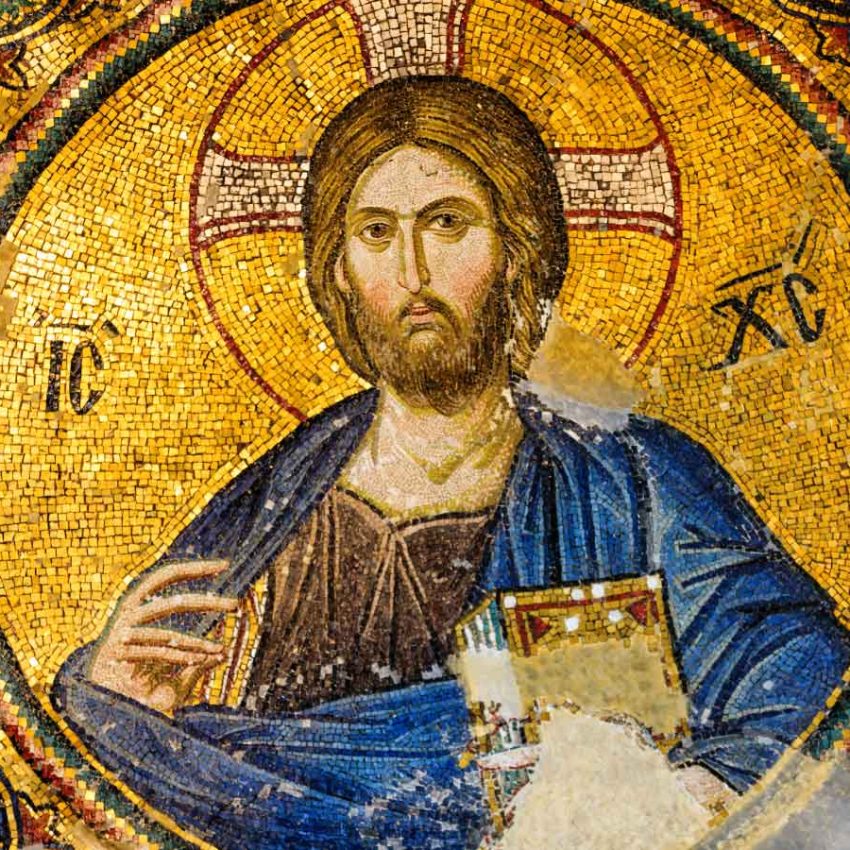Some of the most famous sculptures of all time
Famous sculptures are an integral part of the world’s artistic heritage, with stunning examples found in various countries and cultures.
These sculptures are not just objects of beauty but also serve as powerful symbols of history, culture, and human creativity.
From ancient masterpieces to modern marvels, the global landscape is adorned with iconic sculptures that continue to inspire awe and wonder in viewers around the world.
From the hallowed halls of the Metropolitan Museum of Art to the sun-kissed shores of Rio de Janeiro, sculptures have stood as monumental testaments to human ingenuity and creativity throughout the annals of history.
Working in three dimensions, sculptors throughout history have shaped marble, bronze, wood, and other materials into incredible forms.
And from our earliest times, sculpture has been an important way to understand culture and society, whether from portrait busts of great leaders or symbolic renderings of ethical principles.
These immortalised forms, crafted from marble, bronze, and stone, have captured the imagination of generations, each chisel mark and curve telling a story of its own.
Let us delve into some of the most renowned sculptures that have left a lasting impact on art history and captivated generations of admirers.
Venus of Willendorf
The Venus of Willendorf, a petite limestone figurine measuring a mere 4.4 inches in height, was unearthed in Willendorf, Austria. Dating back to an astonishing period between 30,000 and 25,000 BCE, this artifact stands as one of the earliest documented artworks in human history.
With its pronounced breasts, rounded abdomen, and curvaceous hips, the figure has led many scholars to interpret it as a depiction of fertility, often classified as a “Venus figurine” due to its presumed association with fertility rites.
Nefertiti
This painted limestone bust, now in the Neues Museum in Berlin, is a beautiful portrait of Nefertiti, the Great Royal Wife of the Egyptian pharaoh Akhenaten. Found in the workshop of an artist named Thutmose, his iconic rendering made Nefertiti a symbol of ideal feminine beauty for centuries to come.
The Rape of Proserpina
At the tender age of 23, the Baroque maestro Bernini embarked on the creation of this marble sculpture, which to this day stands as one of his most remarkable works. Inspired by an ancient Greek myth, The Rape of Proserpina narrates the gripping tale of the god Hades seizing Proserpina, the daughter of Zeus. With consummate skill, Bernini chiselled the two figures from Carrara marble, imbuing the stone with a lifelike quality akin to supple skin. The elaborate arrangement and theatrical flair inherent in its composition render it a quintessential exemplar of Baroque artistry.
Terracotta Army
The terracotta warriors, an awe-inspiring ensemble situated in Xi’an, China, portray the formidable army of Qin Shi Huang, the inaugural Emperor of China. This remarkable assembly comprises 8,000 soldiers, 130 chariots, and 670 horses. Serving as a remarkable testament to funerary artistry, these figures were meticulously crafted to stand guard over the Emperor in the afterlife. Discovered in 1974 by local farmers excavating a well, the warriors were unearthed nearly a mile away from the Emperor’s tomb. Since then, segments of this terracotta army have frequently toured the globe as part of traveling exhibitions, while the mausoleum itself in Xi’an has garnered recognition as a UNESCO World Heritage Site since 1987. The impact of these works transcends conventional boundaries, inspiring diverse creations ranging from three-dimensional sidewalk art to sculptures fashioned from pizza dough. Perhaps one of the most famous works of the ancient world.
Myron's Discobolus
Myron’s Discobolus, an ancient Greek sculpture celebrated for its iconic stature in classical antiquity, holds a profound significance in the realm of art history.The original bronze sculpture was completed around 460-450 BC, the original masterpiece has unfortunately been lost to time, surviving only through numerous marble Roman copies.
Depicting a young male athlete in the midst of launching his disc, the Discobolus embodies physical beauty and athleticism. Despite the intensity of his athletic exertion, the figure emanates a sense of tranquillity and poise, with his gaze typically directed towards his intended target. In his renowned work “The Nude: A Study in Ideal Form,” British art historian Kenneth Clark (1903-1983) praised Myron’s adeptness in capturing two essential qualities: rhythm, representing harmony and balance, and symmetry, reflecting bodily proportion.
Michelangelo
David: Iconic marble masterpiece in Florence
Initially commissioned for the roof of Florence’s cathedral, Michelangelo was only 26 we embarked on this monumental task. The result of his labour, one of the most legendary sculptures in the annals of art history, is none other than the towering figure of David.
Rendered in magnificent scale, Michelangelo’s portrayal of David exudes an aura of serene composure as he stands, his slingshot casually draped over his shoulder, poised with unwavering confidence to confront the formidable Goliath.
Michelangelo’s unparalleled craftsmanship shines through in every aspect of this masterpiece, from the meticulously rendered veins coursing through David’s hand to the exquisite mastery of contrapposto evident in his stance.
Commissioned for the Cathedral of Florence.The 17-foot-tall sculpture, crafted between 1501 and 1504 from a single block of white marble, this masterpiece depicts the biblical hero in all his glory, a symbol of courage and defiance against all odds, captivating viewers with its intricate details and stunning realism.
The artists unparalleled attention to detail and extraordinary mastery of marble is evident in every aspect of this sculpture.
Utilising a 50-year-old block of marble previously worked on by Donatello, Michelangelo showcased his remarkable skill in transforming stone into lifelike flesh and blood.
David stands as one of the most famous sculptures of all time, representing the first colossal marble statue produced in the early modern period following classical antiquity.
Its iconic status transcends the boundaries of Florence, coming to symbolize the pinnacle of the Florentine Renaissance.
Today, visitors from across the globe flock to Florence’s Galleria dell’Accademia to marvel at the grandeur and artistry encapsulated within this timeless masterpiece.
Auguste Rodin: The Thinker
But Michelangelo is not alone in the annals of art history. Another titan of sculpture, by French sculptor Auguste Rodin, brought forth works that would redefine the medium for generations to come.
His iconic piece, The Thinker, is a study in contemplation, a nude figure lost in deep introspection, symbolising the eternal quest for knowledge and understanding.
Rodin’s influence extends far beyond his native France, permeating the global landscape of sculpture with his revolutionary techniques and profound insights into the human condition.
Originally named as The Poet, this masterpiece was initially conceived as an integral component of a grander ensemble entitled The Gates of Hell.
However, it was the foundry workers who, noting resemblances to Michelangelo’s Il Penseroso (The Thinker), bestowed upon it the title The Thinker, thus transforming it into an autonomous work of art
. Esteemed for its profound significance, this celebrated sculpture has been replicated numerous times, with a total of 28 full-figure castings, albeit many executed posthumously.
The Musée Rodin holds the distinction of exhibiting the inaugural full-scale casting of this iconic figure, frequently utilised as a symbol of philosophical contemplation.
Pondering bronze figure symbolizing philosophy and deep contemplation. This iconic sculpture captures a moment of intense thought and introspection, with the figure’s furrowed brow and tense posture conveying a sense of intellectual struggle.
The Thinker is often seen as a representation of human intellect and the pursuit of truth, making it one of Rodin’s most famous and enduring works.
The Venus de Milo: Ancient Greek statue of beauty
The Venus de Milo is a renowned ancient Greek statue that depicts Aphrodite, the Greek goddess of love and beauty. It was created between 130 and 100 BC, believed to be the work of Alexandros of Antioch. The statue is made out of marble and portrays a woman standing tall with a calm expression on her face.
One of the most captivating features of the Venus de Milo is its missing arms, which has added to its mystique over the centuries. The statue now resides in the Louvre Museum in Paris, where it continues to be admired by visitors from around the world as a symbol of timeless beauty and artistry.
Venturing further back into antiquity, we encounter the Laocoön and His Sons, a masterpiece of Hellenistic sculpture housed within the Vatican Museums. Depicting a harrowing scene from Greek mythology, this monumental work captures the agony of the Trojan priest and his sons as they are ensnared by sea serpents sent by the gods. Crafted with astonishing detail and realism, this sculpture serves as a vivid reminder of the power of storytelling through art.
The Statue of Liberty: Symbol of freedom in New York
One of the most iconic sculptures in the world is The Statue of Liberty stands tall on Liberty Island in New York Harbour, symbolising freedom and democracy. Designed by French sculptor Frédéric Auguste Bartholdi, the statue was a gift from the people of France to the United States and was dedicated in 1886. With its torch held high, the Statue of Liberty has welcomed millions of immigrants to America over the years as a beacon of hope and opportunity.
Christ the Redeemer: Iconic statue overlooking Rio de Janeiro
Christ the Redeemer is an iconic statue that overlooks the city of Rio de Janeiro in Brazil. The statue, which stands at 98 feet tall and weighs over 600 tons, represents Jesus Christ with outstretched arms. It is located on top of the Corcovado Mountain and has become a symbol of both Rio de Janeiro and Brazil as a whole. The statue was completed in 1931 and has since been recognized as one of the New Seven Wonders of the World. Visited by millions of tourists each year, Christ the Redeemer offers stunning panoramic views of the city below and remains a significant cultural landmark in Brazil.
Winged Victory of Samothrace
Situated within the prestigious confines of the Louvre, the Winged Victory of Samothrace, also known as Nike of Samothrace, stands as an iconic embodiment of Hellenistic Greek sculptural artistry. This masterpiece portrays Nike, the revered Greek goddess of victory, in a moment of triumphant splendour, representing one of the rare surviving Hellenistic sculptures of Greek origin rather than a subsequent Roman replication.
Clad in garments that delicately cling to her form, the goddess strides forward with an air of triumph, evoking the imagery of a figurehead adorning the prow of a vessel, leading troops towards conquest. Regarded as one of the most illustrious sculptures in the annals of history, its influence reverberates across time, inspiring works such as Umberto Boccioni’s seminal creation, Unique Forms of Continuity in Space.
Umberto Boccioni
Unique Forms of Continuity in Space by Boccioni embodies speed and force in a striding figure, transcending individuality for a collective representation of motion. As a leading figure in the Italian Futurist movement, Boccioni rejected classical and Renaissance sculpture, advocating for art that reflects its contemporary moment. In his manifesto Futurist Painting Sculpture, he dismissed Italy’s artistic heritage and embraced the industrial era’s dynamism. Boccioni and his peers even saw the impending world war as a means to propel humanity into a future where man and machine would converge.
Constantin Brancusi
Constantin Brancusi, widely regarded as the most influential sculptor of the 20th century, crafted what is considered his most influential work, “Bird in Space” (1923–1940), with known versions crafted from bronze, marble, or plaster. Contrary to typical figurative depictions of birds in flight, this sculpture presents an elegant, vertical form reminiscent of a wave of energy ascending from the earth.
While many perceive it as an abstract representation of a bird in space, Brâncuși himself may have viewed it differently. He saw his work as a pursuit of realism, aiming to unveil the inner, hidden reality and essence of objects.
Brâncuși’s perspective challenges conventional distinctions between abstraction and representation. He believed that all art, even when seemingly abstract, ultimately represents something, even if it is only itself.
Thus, every artistic representation is inherently abstract in its portrayal of ideas. This nuanced perspective reflects a delicate balance, much like the intricate harmony embodied in “Bird in Space.”
Picasso's Sculpture
Picasso’s Maquette for Guitar, created in 1912, revolutionized the medium of sculpture much like Les Demoiselles revolutionized painting. Before Maquette for Guitar, sculpture typically involved shaping a form out of specific materials like clay, wax, wood, or stone, through techniques such as modelling or carving.
Even casting relied on this initial process. However, Picasso reimagined sculpture as akin to architecture, assembling open, planar components. This ground-breaking concept continued to influence 20th-century art and beyond, reshaping perceptions of sculptural form and technique.
Laocoön and His Sons
Ever since its excavation in 1506, Laocoön and His Sons has captivated the attention of archaeologists and art enthusiasts alike, becoming one of the most famous ancient sculptures ever. This Hellenistic masterpiece portrays three marble figures engaged in a scene brimming with action, drawing inspiration from an ancient Greek myth. Legend has it that Laocoön, a priest hailing from Troy, along with his two sons, Antiphantes and Thymbraeus, fell victim to an assault by sea serpents dispatched by a deity. It is based on the myth of a Trojan priest killed along with his sons by sea serpents sent by the sea god Poseidon as retribution for Laocoön’s attempt to expose the ruse of the Trojan Horse. While the identity of the original sculptor remains shrouded in mystery, the artwork is renowned for its remarkable technical prowess and profound emotional resonance. Originally installed in the palace of Emperor Titus, this life-size figurative grouping, attributed to a trio of Greek sculptors from the Island of Rhodes, is unrivalled as a study of human suffering.
Gian Lorenzo Bernini - Ecstasy of Saint Teresa
The Ecstasy of Saint Teresa, also known as Saint Teresa in Ecstasy, is a stunning sculptural masterpiece crafted from white marble, situated within the elevated aedicule of the Cornaro Chapel in the church of Santa Maria della Vittoria in Rome. Designed and executed by Gian Lorenzo Bernini, the preeminent sculptor of the Baroque era, the commission was completed in 1652.
This altarpiece group portrays Saint Teresa of Ávila, a renowned Spanish Carmelite nun, in a state of religious rapture, as described in her own accounts of visionary experiences. A captivating feature of the ensemble is an angel holding a spear, positioned above Saint Teresa, symbolizing the divine intervention she believed she received. Surrounding the central group are two sets of donor portraits belonging to the Cornaro family, providing an audience-like setting akin to a theatrical performance. Widely regarded as a pinnacle of High Roman Baroque sculpture, this composition exemplifies Bernini’s unparalleled mastery of form and expression.
Louise Bourgeois - Maman
Louise Bourgeois spider sculpture towering over 30 feet tall at the Guggenheim in Bilbao, stands as a masterful synthesis of physical grandeur and psychological resonance. This imposing sculpture, resembling a colossal spider, carries profound personal significance for the artist, evoking memories of her own mother, who toiled as a tapestry repairer.
The arachnid figure, fiercely guarding her sac of 26 marble eggs, elicits both awe and vulnerability; her towering presence instils fear, while her delicate, stilt-like legs hint at fragility, seemingly teetering on the brink of collapse. The motif of the spider permeates Bourgeois’ oeuvre, originating in her drawings in 1947 and persisting throughout her career, culminating in the creation of the 1996 sculpture Spider.
Anish Kapoor - Cloud Gate
Anish Kapoor, known for both his artistic innovations and occasional controversies, has garnered attention with his headline-making sculptures. One of his most renowned public sculptures, Cloud Gate in Chicago’s Millennium Park, was inspired by liquid mercury.
Kapoor secured the commission through a design contest, despite scepticism about the feasibility of the seamless design’s construction and maintenance. Nevertheless, the 110-ton elliptical sculpture, affectionately dubbed “the Bean,” has since become a beloved fixture of the city.
Situated in Millennium Park, it offers visitors a unique perspective of Chicago’s iconic skyline as they pass beneath its 12-foot-high arch. Kapoor’s inspired creation, measuring 66 feet in length and 33 feet in height, captivates with its reflective surface, echoing the fluidity of liquid mercury.
Jeff Koons
Controversial yet undeniably impactful, Jeff Koons has left an indelible mark on 20th-century art. In 2013, his iconic Balloon Dog (Orange), crafted from stainless steel with a transparent coating, shattered records for a living artist, fetching an astonishing $58.4 million at Christie’s auction house.
This sculpture, part of a series that magnifies a whimsical childhood party favour into monumental art, epitomizes Koons’ penchant for transforming the ordinary into the extraordinary. Alongside the orange iteration, Koons produced other versions in blue, magenta, red, and yellow, further solidifying his status as a provocateur of contemporary art.
Conclusion: Impact and significance of famous sculptures
In conclusion, the art world is richly adorned with top famous sculptures that have left an indelible mark on history.
From classic sculptures depicting mythical tales to famous sculptures in history embodying profound human emotions, these works of sculpture stand as testaments to the creativity and ingenuity of mankind.
Whether crafted by the greatest sculptors of all time or emerging talents, these sculptures you need to know have graced museums around the world, from the Neues Museum in Berlin to the Museum of Art in New York. Each sculpture has become an iconic piece of art, recognized for its beauty, symbolism, and cultural significance.
As we marvel at the male nude form of Michelangelo’s David or the grandeur of the Winged Victory of Samothrace, we are reminded of the enduring power of sculpture to evoke emotion and provoke thought.
The island of Rhodes, home to the Court Sculptor, and the French artist Rodin’s revolutionary contributions to the art form further highlight the diverse influences that have shaped the world of sculpture.
In contemplating the many sculptures that have graced history, we gain insight into the human condition and the timeless pursuit of artistic expression.
These sculptures, whether portraying Perseus with the Head of Medusa or offering solace through the outstretched arms of Christ the Redeemer, continue to captivate audiences with their beauty and complexity.
As we celebrate the best sculptures from across the ages, we honor the legacy of the greatest sculptor who dared to shape the world with their vision and creativity.





